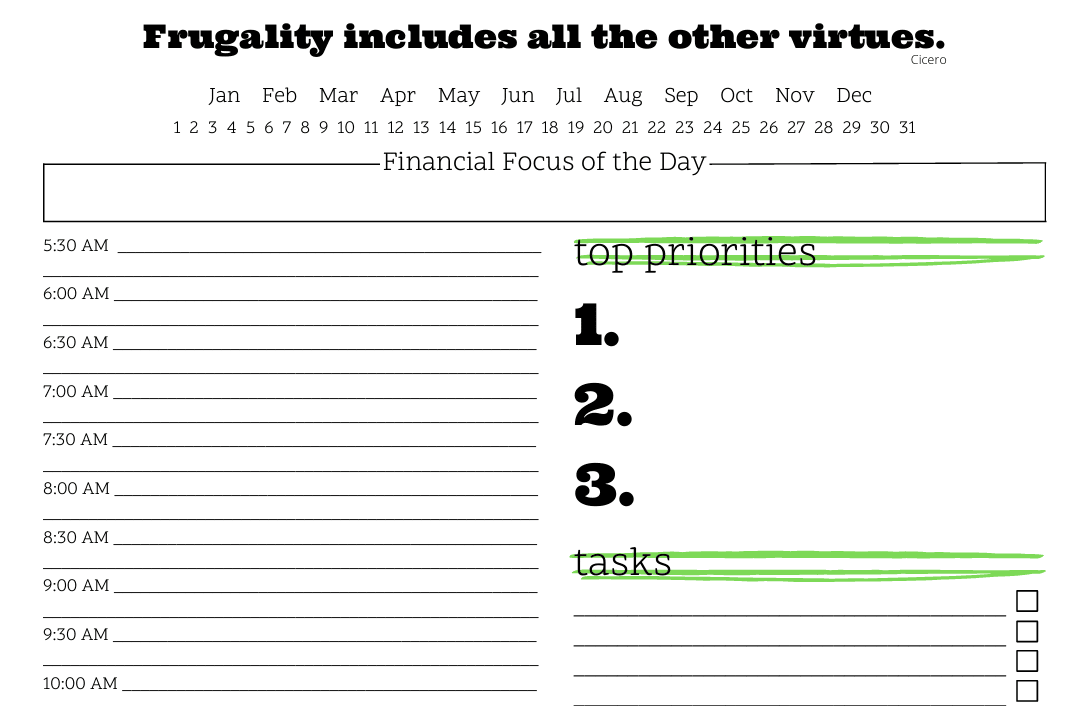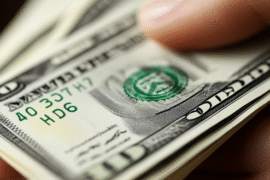This article may contain references to products or services from one or more of our advertisers or partners. We may receive compensation when you click on links to those products or services. Nonetheless, our opinions are our own.
The information presented in this article is accurate to the best of our knowledge at the time of publication. However, information is subject to change, and no guarantees are made about the continued accuracy or completeness of this content after its publication date.
The U.S. Federal Reserve decided to keep interest rates the same in June 2025, keeping the federal funds rate between 5.25% and 5.50%. This action shows that the central bank is being careful because inflation is slowing down, job growth is steady, and consumer spending data is sending mixed signals. The decision seems to put a stop to the cycle of tightening monetary policy, giving policymakers more time to look at the overall economic outlook before making any changes.
A stable interest rate environment can have an effect on many parts of both personal and business finance. Costs of borrowing, returns on savings, choices about investments, and real estate deals are all affected. Knowing how to respond strategically to this type of monetary policy decision can help people and businesses protect and grow their money during a time of economic moderation.
- Federal Reserve’s Rate Decision
- The Fed’s Stance and Its Rationale
- Impact and Strategies
- Financial Moves to Consider While Rates Remain Steady
- Conclusion
- Frequently Asked Questions
- What does it mean when the Fed holds interest rates steady?
- How does a steady interest rate affect borrowing?
- Should variable-rate loan holders consider switching?
- Are savings accounts impacted by this decision?
- Is now a good time to invest in the stock market?
- What should be the financial priority during a steady rate period?
- Could the Fed raise or lower rates again soon?
- Recommended Reads
Federal Reserve’s Rate Decision
When the Federal Reserve holds interest rates steady, it signals an effort to balance economic growth with inflation control. Instead of reacting sharply to monthly changes in economic data, the Fed often takes a long-term view, especially when inflation trends are improving but remain above the 2% target.
Factors influencing the Fed’s decision include:
- Inflation Trends: Inflation has cooled from its 2022 highs, but some categories, such as housing and services, continue to show elevated pricing.
- Labor Market Conditions: Employment growth has slowed slightly, but unemployment remains low, indicating a still-resilient job market.
- Consumer Spending: Household spending has plateaued in recent months, and credit card delinquencies are rising, hinting at increasing financial pressure on consumers.
- Global Uncertainty: International factors, such as geopolitical instability and supply chain risks, also weigh on the Fed’s cautious approach.
The Fed’s Stance and Its Rationale
The Federal Reserve’s decision to hold rates is not a sign of complacency but rather a calculated pause. The takeaways from recent Fed statements and projections (as of mid-2025) are:
- Data Dependence: The Fed is explicitly data-dependent. They are looking for clear and consistent signs that inflation is sustainably moving towards their 2% target, and they are also closely monitoring the labor market.
- Inflation Concerns Remain, but with Nuance: While overall inflation has cooled, core inflation (excluding volatile food and energy) can still be sticky. There are also concerns about potential inflationary pressures from tariffs, which the Fed acknowledges could be temporary but warrant observation.
- Economic Slowdown Signals: The Fed is seeing “cracks” in the economy, particularly in housing and a slowing pace of hiring. This hints at the delicate balancing act between fighting inflation and avoiding a significant economic downturn.
- Anticipated Future Cuts (But Cautiously): The Fed expects to cut rates twice by the end of the year, but this is a projection, not a promise. The current “hold” allows them to gather more data and ensure any future cuts are warranted and timely.
- Global Context: Other major central banks (Europe, Canada, UK) have already started cutting rates. This puts some pressure on the Fed, but their primary focus remains on domestic conditions.
Voted "Best Overall Budgeting App" by Forbes and WSJ
Monarch Money helps you budget, track spending, set goals, and plan your financial future—all in one app.
Get 50% OFF your first year with code MONARCHVIP
Impact and Strategies
I. For Savers: Maximizing Yields and Preserving Purchasing Power
While high-yield savings accounts and CDs are still your best friends, let’s consider the inflation factor more deeply.
- Real Interest Rates: The crucial concept here is the real interest rate, which is the nominal interest rate (what your bank pays you) minus the inflation rate.
- If your high-yield savings account pays, say, 4.5%, and inflation is 2.1%, your real return is 2.4%. This means your purchasing power is genuinely increasing.
- If inflation were to surge unexpectedly to, say, 5%, your 4.5% nominal rate would result in a negative real return of -0.5%, meaning your money is losing purchasing power.
- Strategy:
- Stay in High-Yield Accounts: Absolutely keep your emergency fund and short-term savings in high-yield savings accounts. Even if the Fed does cut rates later in the year, these accounts will still offer better returns than traditional savings accounts.
- Laddering CDs: If you have larger sums you don’t need for a few years, consider a CD ladder. This involves dividing your money into multiple CDs with different maturity dates (e.g., 6 months, 1 year, 2 years, 3 years). As each CD matures, you can reinvest it at the then-current rates. This strategy offers flexibility and allows you to capture potentially higher rates if they rise, while also benefiting from current good rates.
- Monitor Inflation: Keep an eye on inflation reports. If inflation starts to accelerate significantly, you might need to reconsider your allocation to cash and look for other assets that historically perform better in inflationary environments (e.g., certain commodities, real estate, inflation-protected bonds).
II. For Borrowers – Strategic Debt Management
The sustained higher rate environment means borrowing costs remain elevated.
- Credit Cards (Priority One): The average credit card APR is over 20%. This is financially crippling.
- Aggressive Paydown: Focus any extra cash you have on paying down these balances.
- Balance Transfers: If you have good credit, explore 0% APR balance transfer cards. Be disciplined to pay off the transferred balance before the promotional period ends.
- Personal Loans: For large, high-interest credit card debt, a fixed-rate personal loan with a lower interest rate can consolidate and provide a predictable payment schedule.
- Mortgages:
- Fixed vs. Variable: If you’re considering a new mortgage, a fixed-rate mortgage provides certainty in an uncertain rate environment. If rates do eventually come down, you can always refinance. If you have an ARM, understand your reset schedule and potential rate increases.
- Refinancing: If you secured a mortgage at a much higher rate in the past, and rates drop significantly later in the year, refinancing could be an option. However, with the Fed holding for now, significant immediate drops are unlikely.
- Auto Loans:
- Shop Around: Always get quotes from multiple lenders (banks, credit unions, dealership financing) to compare rates.
- Strong Credit: The better your credit score, the lower the rate you’ll qualify for. If your score needs improvement, delay a large purchase if possible and work on it.
III. For Investors – Adapting Portfolio Strategies
A “flat” or stable interest rate environment (before potential future cuts) demands specific considerations.
- Equities (Stocks):
- Sector Nuances:
- Financials: Banks and other financial institutions generally benefit from higher interest rates as their net interest margins improve (the difference between what they earn on loans and what they pay on deposits).
- Utilities & Consumer Staples: These sectors are often considered “defensive” and can perform relatively well in periods of slower growth or uncertainty. Their consistent dividends can be appealing when bond yields are steady but may not offer significant capital appreciation.
- Growth Stocks (Technology, Discretionary): These companies often rely on future earnings potential, which can be discounted more heavily when interest rates are high. However, if the market anticipates future rate cuts, these sectors might see a rebound as their future earnings become more valuable. Look for companies with strong balance sheets and consistent free cash flow.
- Companies with Pricing Power: In an environment where inflation is still a concern, companies that can pass on higher costs to consumers (due to strong brands or essential products/services) are more resilient.
- Dividend Stocks: With bond yields stable, dividend-paying stocks can still offer attractive income, especially from companies with a history of increasing dividends (Dividend Aristocrats).
- Sector Nuances:
- Bonds:
- Duration Management: If you believe rates will eventually fall, consider lengthening your bond duration. Longer-term bonds are more sensitive to interest rate changes, meaning their prices will rise more significantly if rates decline. However, they also fall more if rates rise unexpectedly.
- Corporate Bonds: Higher-quality corporate bonds can offer a yield premium over government bonds while still maintaining relatively low credit risk.
- Floating Rate Notes: These are bonds whose interest payments adjust with a benchmark rate (like SOFR). They offer protection against rising rates but won’t see capital appreciation if rates fall. They could be a good hedge if you’re uncertain about the Fed’s next move.
- Alternative Investments:
- Real Estate: While higher mortgage rates impact new purchases, existing real estate can be an inflation hedge. REITs (Real Estate Investment Trusts) offer a liquid way to gain exposure to real estate and often pay decent dividends.
- Commodities: Gold and other commodities can serve as a hedge against inflation and economic uncertainty.
- Diversification Remains Paramount: A well-diversified portfolio across asset classes (stocks, bonds, real estate, commodities) and geographies is always the best defense against unforeseen market shifts. Avoid relying solely on a single Fed decision.
Financial Moves to Consider While Rates Remain Steady
1. Explore Refinancing Options
With interest rates no longer rising, individuals carrying high-interest debt may benefit from refinancing existing loans.
- Mortgages: Homeowners with older, higher-rate mortgages may find opportunities to refinance at more favorable terms if lenders begin to lower offered rates in anticipation of future Fed cuts.
- Student Loans: Borrowers with variable-rate loans may reduce future risk by switching to fixed-rate products if inflation and rate volatility return.
2. Manage and Consolidate High-Interest Debt
Stable interest rates present an opportunity to aggressively reduce debt burdens without the threat of rising variable loan payments.
- Credit Card Debt: Paying off high-interest balances should be a top priority, especially as interest charges compound rapidly.
- Debt Consolidation Loans: Those with strong credit profiles may qualify for personal loans with lower fixed rates to streamline repayment.
3. Assess Long-Term Investment Strategies
While steady rates reduce uncertainty, market dynamics remain sensitive to inflation forecasts and Fed commentary.
- Stock Market: Equities may benefit from stability in borrowing costs, particularly if inflation continues to ease.
- Bonds and Fixed Income: Long-duration bonds could become more attractive if rate cuts are expected in future quarters, potentially boosting bond prices.
- Real Estate: With borrowing costs plateauing, investors may consider real estate as a hedge against inflation and a long-term income source.
4. Optimize Savings and Cash Holdings
Even in a steady-rate environment, consumers can position savings to achieve better returns.
- High-Yield Savings Accounts: Online banks and credit unions continue to offer elevated APYs, sometimes exceeding 4.5%, significantly higher than traditional savings accounts.
- Certificates of Deposit (CDs): Locking in yields now could be advantageous before potential rate cuts lower future returns.
- Money Market Accounts: These accounts often provide competitive yields while allowing easier access than CDs.
5. Stay Informed and Financially Prepared
Economic conditions can shift quickly, and the Fed’s current position may evolve with new data. Ongoing monitoring of financial news, inflation readings, and policy commentary is essential.
- Education: Use credible financial websites and tools to understand market movements and interest rate projections.
- Professional Guidance: Consulting with certified financial planners can help tailor strategies based on individual risk tolerance and goals.
Conclusion
The Federal Reserve’s choice to keep interest rates the same shows that it is taking a careful, data-driven approach to keeping inflation in check and promoting long-term economic growth. This stability gives consumers and investors a chance to make smart moves in areas like refinancing, paying off debt, saving money, and investing for the long term.
It is very important to stay proactive. The economy as a whole is still changing, even if interest rates don’t go up or down right away. During a time of change in U.S. monetary policy, people who stay informed and flexible are better able to protect and improve their financial health.
Frequently Asked Questions
What does it mean when the Fed holds interest rates steady?
It means the Federal Reserve has chosen not to increase or decrease the federal funds rate. This decision typically reflects a wait-and-see approach to economic indicators such as inflation and employment.
How does a steady interest rate affect borrowing?
Borrowing costs for mortgages, personal loans, and credit cards tend to remain stable when the Fed holds rates. This can create a favorable window for refinancing or taking on new credit at predictable rates.
Should variable-rate loan holders consider switching?
Yes. Those with variable-rate loans may want to explore refinancing to a fixed rate, especially if they expect interest rates to rise again or want more predictable monthly payments.
Are savings accounts impacted by this decision?
Yes. Banks typically adjust savings and CD interest rates in response to the Fed’s actions. While rates are steady, high-yield savings accounts and fixed-term CDs may still offer competitive returns.
Is now a good time to invest in the stock market?
Stable interest rates can create a more predictable investment environment. However, market risks remain, and investment decisions should be based on long-term goals, risk tolerance, and diversification.
What should be the financial priority during a steady rate period?
Focus on strengthening your financial base: pay down high-interest debt, optimize savings returns, and evaluate opportunities for long-term investing.
Could the Fed raise or lower rates again soon?
Yes. The Fed may adjust rates depending on future economic data related to inflation, employment, GDP growth, and global developments. Staying informed is important for timely financial planning.

Reviewed and edited by Albert Fang.
See a typo or want to suggest an edit/revision to the content? Use the contact us form to provide feedback.
At FangWallet, we value editorial integrity and open collaboration in curating quality content for readers to enjoy. Much appreciated for the assist.
Did you like our article and find it insightful? We encourage sharing the article link with family and friends to benefit as well - better yet, sharing on social media. Thank you for the support! 🍉
Article Title: How to Take Advantage of Feds Hold Rates
https://fangwallet.com/2025/10/04/how-to-take-advantage-of-feds-hold-rates/The FangWallet Promise
FangWallet is an editorially independent resource - founded on breaking down challenging financial concepts for anyone to understand since 2014. While we adhere to editorial integrity, note that this post may contain references to products from our partners.
The FangWallet promise is always to have your best interest in mind and be transparent and honest about the financial picture.
Become an Insider

Subscribe to get a free daily budget planner printable to help get your money on track!
Make passive money the right way. No spam.
Editorial Disclaimer: The editorial content on this page is not provided by any of the companies mentioned. The opinions expressed here are the author's alone.
The content of this website is for informational purposes only and does not represent investment advice, or an offer or solicitation to buy or sell any security, investment, or product. Investors are encouraged to do their own due diligence, and, if necessary, consult professional advising before making any investment decisions. Investing involves a high degree of risk, and financial losses may occur including the potential loss of principal.
Source Citation References:
+ Inspo
There are no additional citations or references to note for this article at this time.












































